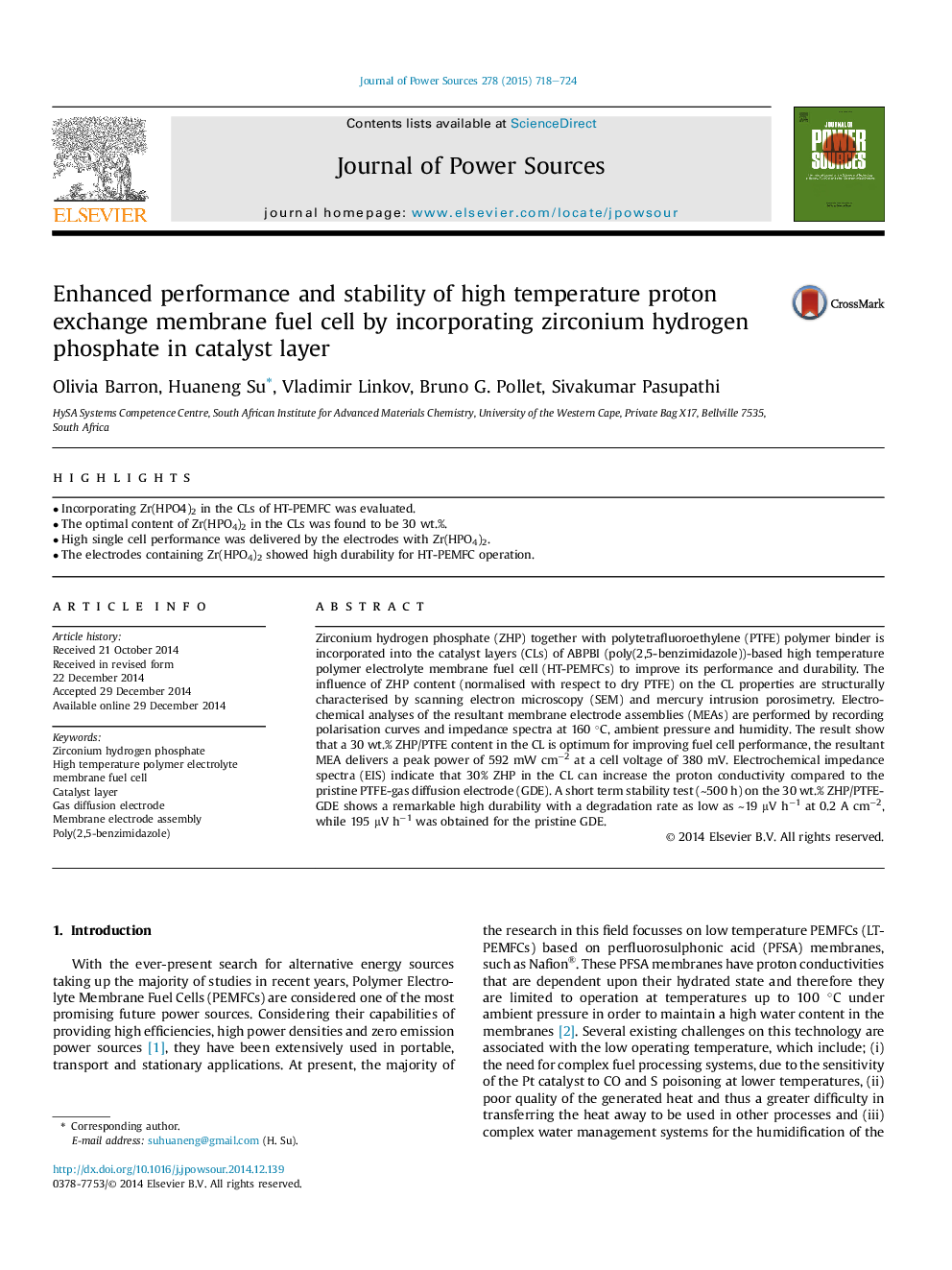| Article ID | Journal | Published Year | Pages | File Type |
|---|---|---|---|---|
| 7733947 | Journal of Power Sources | 2015 | 7 Pages |
Abstract
Zirconium hydrogen phosphate (ZHP) together with polytetrafluoroethylene (PTFE) polymer binder is incorporated into the catalyst layers (CLs) of ABPBI (poly(2,5-benzimidazole))-based high temperature polymer electrolyte membrane fuel cell (HT-PEMFCs) to improve its performance and durability. The influence of ZHP content (normalised with respect to dry PTFE) on the CL properties are structurally characterised by scanning electron microscopy (SEM) and mercury intrusion porosimetry. Electrochemical analyses of the resultant membrane electrode assemblies (MEAs) are performed by recording polarisation curves and impedance spectra at 160 °C, ambient pressure and humidity. The result show that a 30 wt.% ZHP/PTFE content in the CL is optimum for improving fuel cell performance, the resultant MEA delivers a peak power of 592 mW cmâ2 at a cell voltage of 380 mV. Electrochemical impedance spectra (EIS) indicate that 30% ZHP in the CL can increase the proton conductivity compared to the pristine PTFE-gas diffusion electrode (GDE). A short term stability test (â¼500 h) on the 30 wt.% ZHP/PTFE-GDE shows a remarkable high durability with a degradation rate as low as â¼19 μV hâ1 at 0.2 A cmâ2, while 195 μV hâ1 was obtained for the pristine GDE.
Keywords
Related Topics
Physical Sciences and Engineering
Chemistry
Electrochemistry
Authors
Olivia Barron, Huaneng Su, Vladimir Linkov, Bruno G. Pollet, Sivakumar Pasupathi,
